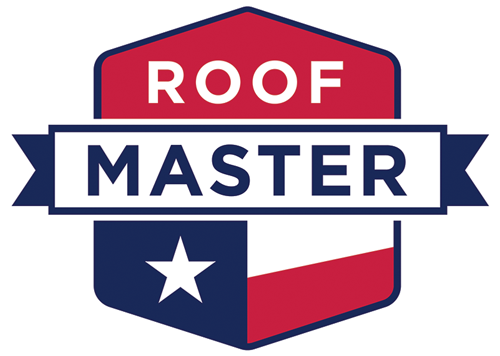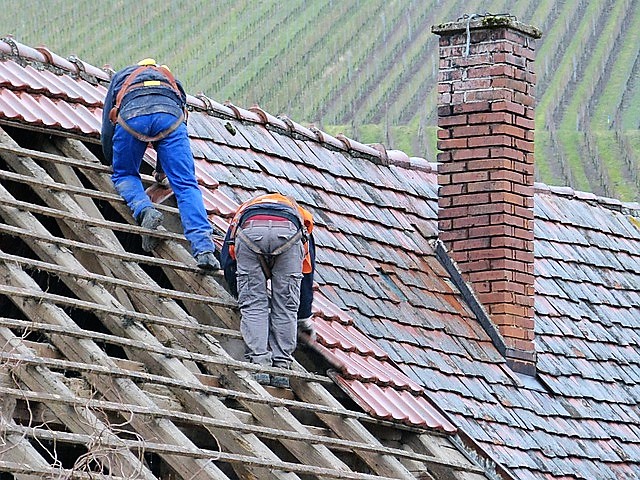Roofing isn’t a simple topic, especially when it comes to sheathing.
You may have asked, “what is roof sheathing?” the first time you heard the term. Roof sheathing refers to a layer of sturdy wood boards applied to the roof’s joists and trusses.
In case you are wondering, decking and sheathing are the same things. Contractors can use the terms interchangeably depending on what’s more familiar.
Roofing experts recommend roof sheathing because it helps fortify your roof. It’s a support system of sorts for the whole roofing system. The other way of looking at it is that it is the foundation for your roof.
What Is Used For Roof Sheathing For Roofs?
The materials used as roof sheathing is oriented strand board (OSB) or plywood, which are all wood, except the former is more affordable. Your roofing contractor is more likely to use plywood in the roof sheathing.
Plywood is preferable for its sturdiness, mainly when used on slate or concrete roofing tiles. The other material is dimensional lumber. Roofers used it in the past using tongue and groove lumber.
How to Install Roof Sheathing
Roof sheathing requires an expert since it goes beyond laying panels haphazardly on the roof. Remember that it is the foundation and therefore needs to have all the characteristics of a strong foundation.
An essential part of proper installation is ensuring that you leave adequate space for contraction and expansion as the weather changes. As for tools, nails and a hammer won’t do. Instead, use a nail gun to make the work easier.
How to Choose the Best Roof Sheathing Thickness
The sheathing’s thickness is vital as it influences your roof’s strength. Thicker panels add strength to the roof deck, preventing bowing between trusses and rafters. The surface for roofing material will remain secure, increasing your roof’s lifespan.
So, what’s the standard roof sheathing thickness?
Well, there’s no “standard” sheathing thickness due to the various factors that influence the thickness. However, the recommended thickness is ½” to ⅝” thick. Use the ⅝” thick sheathing for OSB and ½” thick sheathing for plywood.
OSB and plywood are common types of roof sheathing, and here are their differences.
- Oriented Strand Board (OSB): Comprises layers of wood chips compressed using adhesives. The wood chips alternate directions between every layer.
- Plywood: Comprises large, ultra-thin wood sheets that are compressed into a sandwich using adhesives and then heated to create one board.
Factors that Influence the Roof Sheathing’s Thickness
When installing a roof, the contractor will select the sheathing’s size based on various factors. The following factors can help you choose your roof’s best sheathing thickness.
1. Sheathing Material
Various types of sheathing materials have varying thicknesses. It’s essential to choose a material whose thickness coincides with your preferences. For instance, the recommended thickness is ½” for plywood and ⅝” for OSB.
2. Truss Spacing and Panel Dimensions
The thick sheathing is necessary if the intervals between the farming are wide. Sheathing panels usually have markings to indicate thickness. The trusses should have sufficient support from the sheathing materials to sustain the weight of a roof.
3. Region of Application
It’s essential to consider where you’ll install the sheathing. For instance, some thicknesses are not suitable for installation in cold environments. It’s essential to consider how the material’s thickness allows its expansion and contraction.
For instance, a 1×6 board doesn’t expand or contract in changing weather. For that reason, thick sheathing materials are necessary for snowy areas to ensure that the sheathing sustains the weight of snow.
Signs that You Need to Repair or Replace Your Roof Sheathing
If your roof sheathing is wooden, there are chances that fungi may attack and weaken it. The condition of your roof sheathing may not only deteriorate due to fungi but also result from normal decay. Unfortunately, this can affect your roof’s structural integrity.
Here are some signs that your roof sheathing needs repair or replacement.
- Damaged Insulation: One sign of a problem with your sheathing is damage to the insulation. Reduced energy efficiency would inform you that you have issues with insulation. So, pay attention to changes in your utility bills.
- Structural Damage: Consider checking on the state of your roof sheathing if you notice that your house has structural damage. The most likely issue is dry wood rot which spreads to other wooden parts of your house.
- Bulging Roof: Once moisture and rot get to your wood, the roof in the spot where there is damage bows or bulges. The sheathing may collapse into the ceiling if you fail to notice and organize its replacement on time.
- Sudden Respiratory Issues: Widespread mold and fungi growth often accompany moisture damage in the roofing system. The result is that you will develop respiratory problems, especially in the presence of black mold spores.
What Is Sheathing On A Roof Good For?
If you’re wondering, “what is sheathing on a roof good for?” you have to consider its benefits. The benefits are easily notable over time as your roof grows older. Let’s look at the benefits that you reap from having a proper installation of roof sheathing.
- Enhances leak protection in your roof – Over time, homeowners have discovered that houses without sheathing are more likely to leak. Even a roof designed to be waterproof, such a shingled roof performs better in this context with a layer of sheathing. It ultimately enhances your roof’s lifespan.
- Fireproof – Manufacturers apply fire retardants when processing roof sheathing to help curb the spread of fire. So, it helps prevent fires.
- Fortifies your roof and provides extra support for the roofing system – The primary benefit of roof sheathing is that it provides support for the roof. It keeps snow loads and precipitation from overwhelming the roof. Also, sheathing ensures even distribution of the weight of roofing material like shingles.
What is roof sheathing? — Final Words
Now that you have an idea of “what is roof sheathing,” you might have noticed that it’s not something you can forget when installing a roof. The installation process has to be accurate to ensure that the sheathing plays its role as intended. If you suspect roof sheathing damage, let the Roof Master experts inspect your roof and repair the sheathing. Contact us today to discuss your roof sheathing repair project with our expert roofers.



